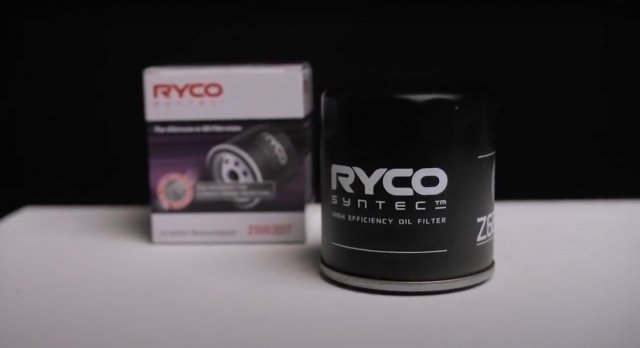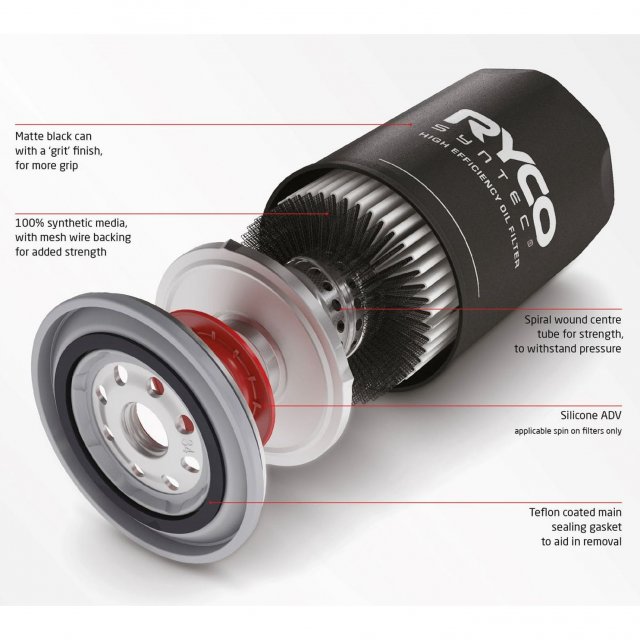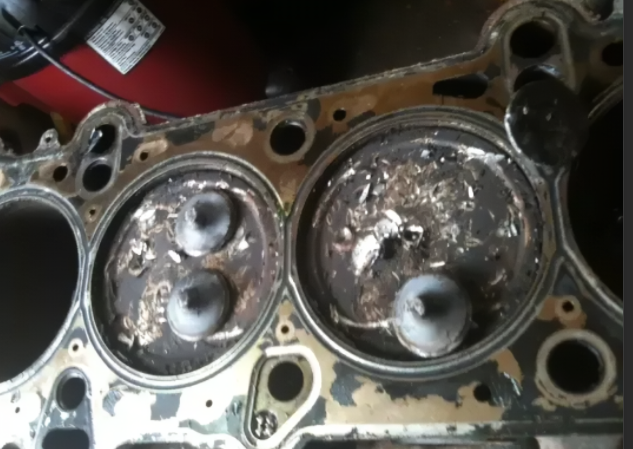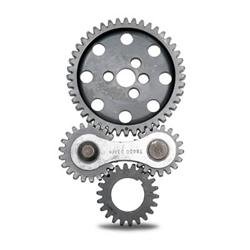-
Sign Up! To view all forums and unlock additional cool features
Welcome to the #1 Ford Fiesta Forum and Ford Fiesta community dedicated to Ford Fiesta owners and enthusiasts. Register for an account, it's free and it's easy, so don't hesitate to join the Ford Fiesta Forum today!
oil filter
- Thread starter Lbrocato
- Start date
- Messages
- 747
- Likes
- 977
- City
- Northern
- State
- CA
- Country
- United States
- What I Drive
- 2015 Fiesta SE HB Magnetic
I have probably changed oil more than 200 times? Maybe more over the past 45 years of driving my cars, changing friends & girlfriends, and parents' cars. Never had an o-ring come out of the old filter and stay stuck to the motor like the guy in the first video says is a real issue. What? Really? I have had to wrestle off a few....I had to mutilate a few to get them off. The key is lubricating the o-ring before you install it. Dry o-ring is a stuck o-ring. This all seems really basic but I guess in this day and age when almost nobody works on their cars anymore, maybe it's news to somebody. I have used Bosch and Fram mostly. Motorcraft, sometimes. Really whatever my budget could afford which was mostly Fram. I never had any issues with any of my filters that I could say caused a motor problem. Hell, I ran a Fram on my external filter & cooler for my Formula Vee (that strainer thing was bullshit!). I remember my grandpa saying they were all the same. Maybe in his day, they were. Obviously they aren't, but are the differences enough to pay 3 times as much for a K&N? I will likely just stick with whatever is on sale and brand I have grown to trust. YMMV!
- Messages
- 1,978
- Likes
- 1,384
- City
- Grand Rapids
- State
- MI
- Country
- United States
- What I Drive
- 2018 Ford Fiesta SE HB
Good points!
It's the MEDIA in the filter that can make or break an engine...
Filter media can be anything from Diaper cloth to fibrous cardboard about the thickness of paper towel sandwiched into a couple of layers and corrugated to withstand the viscosity of oil flowing (or attempting to) through it.
It's also why they recommend the filter media get changed too - when you can't see in there - get rid of it.
Those cutaways show "Hey this looks pretty clean" while others looked kinda ragged and puffed out fuzzy sort of thing...
Ever wonder why? If it's clean then what was it supposed to pick up - might want to check the oil pan...
If it was dirty - can show other indications of wear and mileage; the oil itself can coke or form a varnish - when you change to a different brand of oil the old oil can lift off and get ground up - it could be from the varnish that was protecting the motor until this last oil change
It's the MEDIA in the filter that can make or break an engine...
Filter media can be anything from Diaper cloth to fibrous cardboard about the thickness of paper towel sandwiched into a couple of layers and corrugated to withstand the viscosity of oil flowing (or attempting to) through it.
It's also why they recommend the filter media get changed too - when you can't see in there - get rid of it.
Those cutaways show "Hey this looks pretty clean" while others looked kinda ragged and puffed out fuzzy sort of thing...
Ever wonder why? If it's clean then what was it supposed to pick up - might want to check the oil pan...
If it was dirty - can show other indications of wear and mileage; the oil itself can coke or form a varnish - when you change to a different brand of oil the old oil can lift off and get ground up - it could be from the varnish that was protecting the motor until this last oil change
- Messages
- 39
- Likes
- 58
- City
- N/A
- State
- Non-US
- Country
- Australia
- What I Drive
- Ford Fiesta sport Ecoboost 1.0
I have been using these for a while now,only available in Australia.Ryco is an Australian company,& has been manufacturing filters for decades.These came on the market a few years back,developed by Ryco.15,000kms oil change life.over 99% guaranteed contaminate filtration of nano particles.The media is manufactured in the US.Just a very good filter.Quite a few of our V8 supercar teams use them(ie:Mustang)
Attachments
-
39.6 KB Views: 6
-
162.2 KB Views: 8
Last edited:
- Messages
- 1,970
- Likes
- 1,643
- City
- Grass Lake
- State
- MI
- Country
- United States
- What I Drive
- 2011 Fiesta SE hbk Blue
I did a routine maintenance on my uncles dodge minivan yesterday. I had chosen the "OCoD" last spring when i PM'd it. It unscrewed easy enough. But that gasket was stuck on the filter boss! I always smear oil on the new filter gasket. So, it's not just an urban legend about that issue!
I was laying on my back in his driveway. The filter came off and the gasket was stuck in place!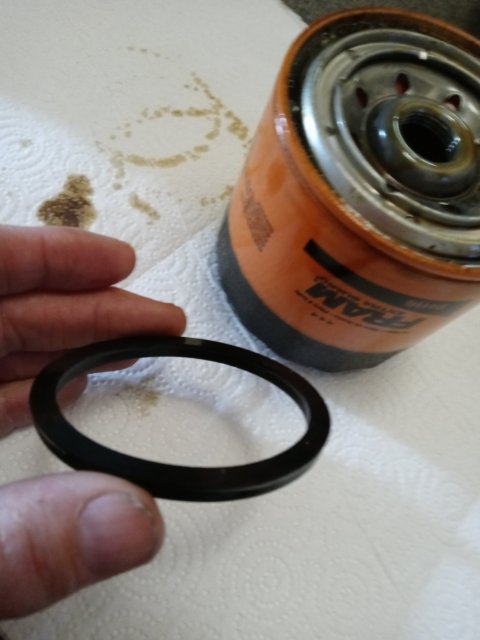
I was laying on my back in his driveway. The filter came off and the gasket was stuck in place!

- Messages
- 1,970
- Likes
- 1,643
- City
- Grass Lake
- State
- MI
- Country
- United States
- What I Drive
- 2011 Fiesta SE hbk Blue
I had been using Motorcraft oil filters exclusively because I could buy them in case quantities for a very good price from my selling dealership.
I have used Bosch Premium oil filters if available in the application needed.
Thanks to covid, i don't always have a good choice of brands for the past year.
I like to add a neodymium, rare earth magnet to the end center of my filter. Its a thin but damn powerful coin type magnet. It should trap metallic particles as they pass by. This little magnet is so strong that you have to scrape or push it off the filter can until you can grab it with pliers. It fights you to remove it!
I have used Bosch Premium oil filters if available in the application needed.
Thanks to covid, i don't always have a good choice of brands for the past year.
I like to add a neodymium, rare earth magnet to the end center of my filter. Its a thin but damn powerful coin type magnet. It should trap metallic particles as they pass by. This little magnet is so strong that you have to scrape or push it off the filter can until you can grab it with pliers. It fights you to remove it!

- Messages
- 747
- Likes
- 977
- City
- Northern
- State
- CA
- Country
- United States
- What I Drive
- 2015 Fiesta SE HB Magnetic
I had been using Motorcraft oil filters exclusively because I could buy them in case quantities for a very good price from my selling dealership.
I have used Bosch Premium oil filters if available in the application needed.
Thanks to covid, i don't always have a good choice of brands for the past year.
I like to add a neodymium, rare earth magnet to the end center of my filter. Its a thin but damn powerful coin type magnet. It should trap metallic particles as they pass by. This little magnet is so strong that you have to scrape or push it off the filter can until you can grab it with pliers. It fights you to remove it! View attachment 5944
I have used Bosch Premium oil filters if available in the application needed.
Thanks to covid, i don't always have a good choice of brands for the past year.
I like to add a neodymium, rare earth magnet to the end center of my filter. Its a thin but damn powerful coin type magnet. It should trap metallic particles as they pass by. This little magnet is so strong that you have to scrape or push it off the filter can until you can grab it with pliers. It fights you to remove it! View attachment 5944
- Messages
- 1,978
- Likes
- 1,384
- City
- Grand Rapids
- State
- MI
- Country
- United States
- What I Drive
- 2018 Ford Fiesta SE HB
- Messages
- 747
- Likes
- 977
- City
- Northern
- State
- CA
- Country
- United States
- What I Drive
- 2015 Fiesta SE HB Magnetic
Got a source for that?
Neat Idea!
I too use "Magnetic Drain Plugs" but this idea sounds better - less chance to "magnetize" one of the cranks from the drain plugs magnet stem proximity to them.
Neat Idea!
I too use "Magnetic Drain Plugs" but this idea sounds better - less chance to "magnetize" one of the cranks from the drain plugs magnet stem proximity to them.
- Messages
- 1,970
- Likes
- 1,643
- City
- Grass Lake
- State
- MI
- Country
- United States
- What I Drive
- 2011 Fiesta SE hbk Blue
- Messages
- 39
- Likes
- 58
- City
- N/A
- State
- Non-US
- Country
- Australia
- What I Drive
- Ford Fiesta sport Ecoboost 1.0
- Messages
- 840
- Likes
- 668
- City
- Elkhart
- State
- IN
- Country
- United States
- What I Drive
- '17 ST
Not sure if this is related,but what is the highest mileage/Kilometres any one has seen on these 1.0 Ecoboost engines?Mine only has 89,000kms so is pretty low really.Just interested if anyone has achieved high mileage without the cam belt change etc…🦘🦘🦘🇦🇺🇦🇺🇦🇺🇦🇺
There are plenty of STs running around with over 100,000 miles with no issues. The early ecoboost engines had a few issues, but they've been addressed. They use those engines in a lot of vehicles, and they work fine.
Just drive it and enjoy the fuel economy.
- Messages
- 39
- Likes
- 58
- City
- N/A
- State
- Non-US
- Country
- Australia
- What I Drive
- Ford Fiesta sport Ecoboost 1.0
The belt change interval is 10 years or 150,000 mi/240,000 km. If it's running fine now, there's no reason to think it won't last at least that long. Just change the oil more frequently than Ford says to.
There are plenty of STs running around with over 100,000 miles with no issues. The early ecoboost engines had a few issues, but they've been addressed. They use those engines in a lot of vehicles, and they work fine.
Just drive it and enjoy the fuel economy.
There are plenty of STs running around with over 100,000 miles with no issues. The early ecoboost engines had a few issues, but they've been addressed. They use those engines in a lot of vehicles, and they work fine.
Just drive it and enjoy the fuel economy.
- Messages
- 1,978
- Likes
- 1,384
- City
- Grand Rapids
- State
- MI
- Country
- United States
- What I Drive
- 2018 Ford Fiesta SE HB
they not change over to a chain for the timing belt?
Having to use a chain, requires a "tensioner" and knowing it is metal - a means to keep it from seizing. There is also the issues around debris and wear of the tooth and cog as well as the link and spindle - which requires the tensioner and it's means to keep proper tension can make the engine quite heavy and also have a secondary "gyroscope effect of "creep" and torque when the motor idles and spins up - although minor effects in themselves - the overall level of torque can cause the motor to twist on the motor mounts and or exhibit excessive wear and "slop" which can overrun the tensioner and guides and create even more of a mess than a snapped belt.
Toyota used chains in their 4-cylinder motors VVT-i and I had no issues except for a considerable noise in the latter years of mileage caused by the tensioner running out of "room" and developing a condition of its slider (where the tensioner rests against the chain) it's made of a special material much like Teflon which helps keep the chain flexible in the links and because of its wear properties "squared" against the gearing. But as the tensioner wears down the develops a slop that a spring and notch system works to take up the slack - but the slider itself only has a limited life or cycle of Mean Time Between Failures MTBF. Kinda like Chalk for a Blackboard, harmless to the Slate but in itself wears down and leaves residue...
Chevy uses Timing Chains in specific motors are not too high in RPM (at least for everyday commuter use) while some other makers - their motors use a Gear-to-Gear mesh system that skips the timing chains or belts completely acting like a transmission gearing system instead.
So then along comes the Belt - which is cheaper and lighter in weight and depending on application - more economical for both the maker and consumer being of a flexible material also can make it quieter and can absorb some abuse and the engine can still operate.
Pretty much all Automakers have used belts in their engines at one time or another for the simplicity of maintenance so Ford in not unique.
But one small aspect many don't think about - is the Piston to Valve clearance.
If the belt snaps off - the cam stops turning and the pistons don't stop on a dime. There is nothing to maintain the valve to piston clearance and timing aspect - it means the valve and the piston are going to meet.
So in some - they "notch" or offset the valve by grooving the piston head to clear the valves "flare" or flute - they call this non-interference.
Others also increase the distance in the cylinder head the valve lifts and seats into - so the combustion chamber space is the clearance. Also known as non-interference.
But then there are some motors out there - I've owned several - that if you don't take care of the belt at the required interval - they are NOT all the same NON-Interference - in fact they are considered INTERFERENCE engines - where the Valve train can strike the pistons' head and damage will result.
This post is not just for us at this moment in time, this is for those that may come across this article at a later time and need to know what we're talking about - so you know what could happen - others might not ... so this is a cover the bases moment.
There's a plethora of engines listed at this link that are made by the Automakers -by size and if they are Interference or Non-Interference motors.
http://yourcarangel.com/2014/07/int...th a non-interference engine. It pays to know.
- Messages
- 840
- Likes
- 668
- City
- Elkhart
- State
- IN
- Country
- United States
- What I Drive
- '17 ST
More interested in how many high mileage units still going out there.I change my oil & filter twice a year @ least.Did they not change over to a chain for the timing belt?Cheers

- Messages
- 39
- Likes
- 58
- City
- N/A
- State
- Non-US
- Country
- Australia
- What I Drive
- Ford Fiesta sport Ecoboost 1.0
There are positives, and negatives to each design.
Having to use a chain, requires a "tensioner" and knowing it is metal - a means to keep it from seizing. There is also the issues around debris and wear of the tooth and cog as well as the link and spindle - which requires the tensioner and it's means to keep proper tension can make the engine quite heavy and also have a secondary "gyroscope effect of "creep" and torque when the motor idles and spins up - although minor effects in themselves - the overall level of torque can cause the motor to twist on the motor mounts and or exhibit excessive wear and "slop" which can overrun the tensioner and guides and create even more of a mess than a snapped belt.
Toyota used chains in their 4-cylinder motors VVT-i and I had no issues except for a considerable noise in the latter years of mileage caused by the tensioner running out of "room" and developing a condition of its slider (where the tensioner rests against the chain) it's made of a special material much like Teflon which helps keep the chain flexible in the links and because of its wear properties "squared" against the gearing. But as the tensioner wears down the develops a slop that a spring and notch system works to take up the slack - but the slider itself only has a limited life or cycle of Mean Time Between Failures MTBF. Kinda like Chalk for a Blackboard, harmless to the Slate but in itself wears down and leaves residue...
Chevy uses Timing Chains in specific motors are not too high in RPM (at least for everyday commuter use) while some other makers - their motors use a Gear-to-Gear mesh system that skips the timing chains or belts completely acting like a transmission gearing system instead.
So then along comes the Belt - which is cheaper and lighter in weight and depending on application - more economical for both the maker and consumer being of a flexible material also can make it quieter and can absorb some abuse and the engine can still operate.
Pretty much all Automakers have used belts in their engines at one time or another for the simplicity of maintenance so Ford in not unique.
But one small aspect many don't think about - is the Piston to Valve clearance.
If the belt snaps off - the cam stops turning and the pistons don't stop on a dime. There is nothing to maintain the valve to piston clearance and timing aspect - it means the valve and the piston are going to meet.
So in some - they "notch" or offset the valve by grooving the piston head to clear the valves "flare" or flute - they call this non-interference.
Others also increase the distance in the cylinder head the valve lifts and seats into - so the combustion chamber space is the clearance. Also known as non-interference.
But then there are some motors out there - I've owned several - that if you don't take care of the belt at the required interval - they are NOT all the same NON-Interference - in fact they are considered INTERFERENCE engines - where the Valve train can strike the pistons' head and damage will result.
This post is not just for us at this moment in time, this is for those that may come across this article at a later time and need to know what we're talking about - so you know what could happen - others might not ... so this is a cover the bases moment.
There's a plethora of engines listed at this link that are made by the Automakers -by size and if they are Interference or Non-Interference motors.
http://yourcarangel.com/2014/07/interference-engines-complete-list/#:~:text=An interference engine is one that has insufficient,with a non-interference engine. It pays to know.
Having to use a chain, requires a "tensioner" and knowing it is metal - a means to keep it from seizing. There is also the issues around debris and wear of the tooth and cog as well as the link and spindle - which requires the tensioner and it's means to keep proper tension can make the engine quite heavy and also have a secondary "gyroscope effect of "creep" and torque when the motor idles and spins up - although minor effects in themselves - the overall level of torque can cause the motor to twist on the motor mounts and or exhibit excessive wear and "slop" which can overrun the tensioner and guides and create even more of a mess than a snapped belt.
Toyota used chains in their 4-cylinder motors VVT-i and I had no issues except for a considerable noise in the latter years of mileage caused by the tensioner running out of "room" and developing a condition of its slider (where the tensioner rests against the chain) it's made of a special material much like Teflon which helps keep the chain flexible in the links and because of its wear properties "squared" against the gearing. But as the tensioner wears down the develops a slop that a spring and notch system works to take up the slack - but the slider itself only has a limited life or cycle of Mean Time Between Failures MTBF. Kinda like Chalk for a Blackboard, harmless to the Slate but in itself wears down and leaves residue...
Chevy uses Timing Chains in specific motors are not too high in RPM (at least for everyday commuter use) while some other makers - their motors use a Gear-to-Gear mesh system that skips the timing chains or belts completely acting like a transmission gearing system instead.
So then along comes the Belt - which is cheaper and lighter in weight and depending on application - more economical for both the maker and consumer being of a flexible material also can make it quieter and can absorb some abuse and the engine can still operate.
Pretty much all Automakers have used belts in their engines at one time or another for the simplicity of maintenance so Ford in not unique.
But one small aspect many don't think about - is the Piston to Valve clearance.
If the belt snaps off - the cam stops turning and the pistons don't stop on a dime. There is nothing to maintain the valve to piston clearance and timing aspect - it means the valve and the piston are going to meet.
So in some - they "notch" or offset the valve by grooving the piston head to clear the valves "flare" or flute - they call this non-interference.
Others also increase the distance in the cylinder head the valve lifts and seats into - so the combustion chamber space is the clearance. Also known as non-interference.
But...
View attachment 5969
View attachment 5969
But then there are some motors out there - I've owned several - that if you don't take care of the belt at the required interval - they are NOT all the same NON-Interference - in fact they are considered INTERFERENCE engines - where the Valve train can strike the pistons' head and damage will result.
This post is not just for us at this moment in time, this is for those that may come across this article at a later time and need to know what we're talking about - so you know what could happen - others might not ... so this is a cover the bases moment.
There's a plethora of engines listed at this link that are made by the Automakers -by size and if they are Interference or Non-Interference motors.
http://yourcarangel.com/2014/07/interference-engines-complete-list/#:~:text=An interference engine is one that has insufficient,with a non-interference engine. It pays to know.
- Messages
- 1,970
- Likes
- 1,643
- City
- Grass Lake
- State
- MI
- Country
- United States
- What I Drive
- 2011 Fiesta SE hbk Blue
It's very good to know before it blows.
Belts are quiet and inexpensive. Preventative maintenance, even though it is a task, is worth doing at least once.
I like. Double idler gear drive timing sets! The one i like for a small block Ford V8 is spendy but makes a cool mechanical noise when you rev the engine, along with being very precise and not ever stretching. The only downside is the need to get some light lubrication on the gears. Otherwise, it provides a very old school cool race car engine sound.
Belts are quiet and inexpensive. Preventative maintenance, even though it is a task, is worth doing at least once.
I like. Double idler gear drive timing sets! The one i like for a small block Ford V8 is spendy but makes a cool mechanical noise when you rev the engine, along with being very precise and not ever stretching. The only downside is the need to get some light lubrication on the gears. Otherwise, it provides a very old school cool race car engine sound.
Attachments
-
7.4 KB Views: 5
- Messages
- 39
- Likes
- 58
- City
- N/A
- State
- Non-US
- Country
- Australia
- What I Drive
- Ford Fiesta sport Ecoboost 1.0
Nope, just a wet belt. I've looked online but there isn't any info. Certainly nothing about high mileage 1.0s. They put them in a lot of cars since 2011, though. If they didn't last, there would be stories about it.
- Messages
- 1,970
- Likes
- 1,643
- City
- Grass Lake
- State
- MI
- Country
- United States
- What I Drive
- 2011 Fiesta SE hbk Blue
I know that the gear drive timing arrangement has been done on European Ford engines like the Cologne 2.6 and 2.8/2.9 Capri and Sierra. As well as the 2.0 sohc cologne 4 cylinder engine aka pinto and Formula Ford here in America.
The way things are designed and packaged so tightly on cars now, it might not be possible on the 1.6 in Fiesta. If it has been done, it would be the first and best way to eliminate the need to replace the timing belt! And would only require some minor oiling maintenance on the gear set to keep the noise level reasonable.
I will have a look into the internet to see if someone has created a gear drive timing arrangement for our Fiesta's.
I searched for a gear drive timing arrangement for the 1.6 ti-vct. I think that the engine is a bit tall in terms of distance from the crank to the cams. Which explains the rather large rubber band.
I imagine that weight and the slight increase in parasitic loss nixed the idea of such an arrangement.
The way things are designed and packaged so tightly on cars now, it might not be possible on the 1.6 in Fiesta. If it has been done, it would be the first and best way to eliminate the need to replace the timing belt! And would only require some minor oiling maintenance on the gear set to keep the noise level reasonable.
I will have a look into the internet to see if someone has created a gear drive timing arrangement for our Fiesta's.
I searched for a gear drive timing arrangement for the 1.6 ti-vct. I think that the engine is a bit tall in terms of distance from the crank to the cams. Which explains the rather large rubber band.
I imagine that weight and the slight increase in parasitic loss nixed the idea of such an arrangement.
Last edited:
Similar threads
-
-
Advice sought - High oil consumption and Turbo issue.
- Started by frustratedfiestaowner
- Replies: 2
-
-
Where does everyone buy their oil and filters from for 1.0 ecoboost?
- Started by Valleyvegan
- Replies: 1
-
Best Oil and filter recommendations for 2018 1.0 Ecoboost
- Started by Valleyvegan
- Replies: 0
-
Oil filter cutter. An Amazon purchase…
- Started by scotman
- Replies: 4
-
Adding a powerful magnet to the oil filter....
- Started by scotman
- Replies: 0
-
Oil in Air Filter and stuck door
- Started by evogelion
- Replies: 6
-
-
S

